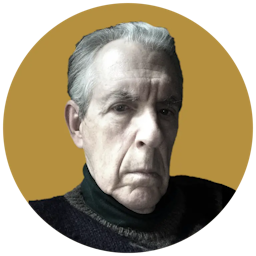Know Your Biographer: Megan Marshall Explains Why
Marshall both reckons with her biographical subjects — the Peabody sisters and Margaret Fuller of 19th century New England — and with how the history of her own family factors into her becoming a biographer.

‘After Lives: On Biography and the Mysteries of the Human Heart’
By Megan Marshall
Mariner Books, 196 Pages
A new term gaining currency among biographers, metabiography, refers to biography that includes the story of the biographer’s life even as the story of another life is narrated, stimulating the biographer to meditate on biography itself, its purposes and consequences. In Megan Marshall’s case, metabiography means reckoning with her biographical subjects — the Peabody sisters and Margaret Fuller of 19th century New England — and with how the history of her own family factors into her becoming a biographer.
Ms. Marshall grew up in a California that seems to have frustrated her need to know about herself, educated in a school that did not appreciate the agitation of students like Jonathan Jackson, who died in a failed effort to free his brother George, a symbol of the Black Power movement. She grew up not knowing the history of her own family, including the thwarted lives of its women.
It seems that the only way for Ms. Marshall to gain a perspective on her own life was by studying the lives of others like Sophia Peabody, a talented artist, married to Nathaniel Hawthorne, who was never able to receive the education required to pursue her ambition. Over many years Ms. Marshall struggled to write a biography of the Peabody sisters — wondering as she married and had children if she, too, would ever complete her work and find fulfillment.
Biographers have written essays and books about the process of doing biography, but what is different about Ms. Marshall’s book is the constant back and forth of her narrative, as she investigates both her subjects and her family. In other words, her biographies cannot be completed until they become her biographies, stories about not only how she learned about other lives but about herself and where she came from.
The implicit theme of “After Lives” is that Ms. Marshall could not have become herself without moving away from her native grounds, without adopting New England, without going to Kyoto to deliver lectures as she learned about the life of a Japanese hermit and compared it to what she knew about Henry David Thoreau’s famous retreat to Walden Pond.
Throughout Ms. Marshall’s book a powerful sense of place informs her understanding of biography and how it emerges out of a material world that includes far more than research into written archives. As in the recent work of historians, she finds handling the material objects of the past — like an ice pick used in her own family’s home — opens up how earlier generations handled their lives when making ice was an everyday business.
As Ms. Marshall chips away at the lives of others and reveals the different selves she became as she left a marriage, found a new partner, lost him to heart disease, and suffered through a pandemic with millions of others, biography becomes a means of salvation, of knowing the world, and no other kind of intellectual/emotional endeavor can suffice.
Or so I gather from Ms. Marshall’s narrative as I think about what it meant to me to actually handle one of Amy Lowell’s cigars, to smell it, sitting there in an archive suddenly overwhelmed by the aroma of her life and thoughts about my grandfather’s cigars and how they called up what family life was like for me in the 1950s, six years after Ms. Marshall was born.
One experience I think you will have while reading “After Lives” is that Proustian feeling for the scent of the past and how it lingers in the present — if you attend to the signs and the signals that biographers like Ms. Marshall search for.
“After Lives” is layered rather like a novel, in which we get to know as much about the narrator as about the story that is told. Most biographies cannot achieve that novel-like status because the biographer is all too aware that the reader has come to read about Sophia Peabody or Margaret Fuller, and not about the biographer who will be regarded as an interloper — like Mr. Lockwood in “Wuthering Heights.” That Ms. Marshall has been able to join her subjects in such a nuanced and subtle way makes her book a singular achievement.
Mr. Rollyson is the author of “Amy Lowell Anew: A Biography,” “Amy Lowell Among Her Contemporaries,” and “Confessions of a Serial Biographer.”

